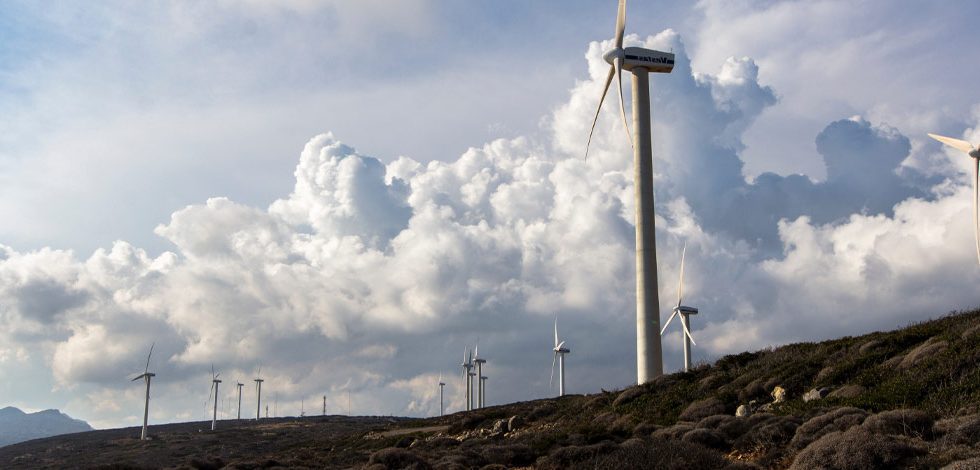Even with rapid advances in decarbonisation, climate change cannot be effectively curbed without sequestering carbon as it is emitted in the industrial sector and in power generation too.
Carbon capture and storage (CCS) technologies involve trapping the carbon dioxide (CO2) in factory flues and power plants burning fossil fuel, compressing and then transporting it by ship or pipeline for permanent storage deep underground in geological formations.
Environmentalists may worry that the technology perpetuates the fossil fuel status quo, but scientists consider it essential to take out accumulated emissions in the atmosphere, as well as residual sources such as power plants and heavy industry. Concrete production, for example, is responsible for at least 5% of humanity’s carbon footprint. While the cement and concrete sector could feasibly cut emissions by 80% by 2050, to get to net zero, producers would require carbon capture and storage, according to Swiss research.
The International Energy Authority (IEA) estimates that the technology needs to provide 7% of the global emissions reductions required to 2040. This would mean a rapid scale-up, from around 30 million tonnes (Mt) of CO2 currently captured each year to 2,300 million tonnes per year by 2040.
However, investment has fallen well behind that of other clean energy solutions, and only 15% of $28bn in public funds earmarked projects over the last decade was spent. There are 18 large-scale facilities operating globally, but few in the pipeline.
Regaining momentum
Yet there are some positive signs. In 2018, the US introduced a significant stimulus for investment with an enhanced tax credit. Called 45Q, it provides up to $50 per tonne of CO2 for permanent storage and $35 for use in enhanced oil recovery (the US oil and gas sector accounts for 70% of global carbon capture capacity). The IEA reckons this could trigger more than $1bn of investment over the next six years, adding up to 30 million tonnes of capacity.
In the UK, which has no large-scale CCS despite its transferable expertise from North Sea oil, momentum was also lost over the last decade, but there’s a new urgency.
Gas-fired power plants with carbon capture and storage are seen as essential to meet rising electricity demand. Achieving the new net-zero target will probably require active removal of at least 130 million tonnes of carbon dioxide from the atmosphere annually by 2050. This is a step-change and at the limit of what is expected to be deliverable for the UK.
In November 2018 the government published an action plan for developing a first carbon capture project by the mid-2020s and regional clusters to scale up applications of the technology. It followed up with a consultation in summer 2019 on the business models needed to underpin investment in CO2 transport and storage, and carbon capture in intensive industries, as well as clean electricity and low-carbon hydrogen and bio-energy.
Latest developments in carbon capture technology
Capturing carbon when burning biomass for energy has an added advantage. Emissions are negative due to the carbon absorbed in growing the fuel. A pilot project at Drax Power station is testing whether it can capture a tonne of carbon per day, on its way to becoming the world’s first carbon-negative power station.
Having upgraded two thirds of its generating units to burn wood pellets instead of coal, Drax is using a carbon-absorbing solvent, C-Capture, developed by a spin-out from the University of Leeds. Drax reports that the technology could capture 50 million tonnes of CO2 per year by 2050, some of which might be used by the drinks industry to inject fizz into beverages.
Britain’s first industrial-scale carbon capture and utilisation (CCU) demonstration plant is being built by Tata Chemicals Europe at Northwich in Cheshire. The £16.7m plant could keep 40,000 tonnes of carbon out of the air every year, starting from 2021. Extracted from its 96MW gas-fired combined heat and power plant, the carbon will be used on site, in manufacturing sodium bicarbonate for medicines and the food industry.
Both projects are supported by innovation grants. Governments around the world will need to get behind CCU. It could be the planet’s last chance to pluck a solution to 2-degree-plus global heating out of thin air.
There are contenders out there, but they are expensive and have not yet been proven at scale.
California’s Blue Planet has developed a machine that extracts CO2 from the open air and stores it in construction materials as a carbonate substitute for aggregate or in a synthetic limestone coating. It believes humans could build their way out of the climate crisis.
Alternative options
Other pioneers are also vying to cut the cost of carbon capture by storing it in marketable products rather than underground. The applications range from the beverage industry to fuel and fertilisers.
Founded in 2009, Canada’s Carbon Engineering is testing production of clean fuel in British Columbia ahead of commercialisation in 2021. Climeworks is also developing carbon-neutral fuels. The Swiss company, which claims to have built the world’s first commercial-scale direct air capture plant, has backing from Audi and several European governments. Backed by Exxon Mobil, Global Thermostat was formed in 2010 in New York, and is commercialising a process for industrial customers using modular carbon extraction plants.
Synthesising fuels from captured carbon is itself energy-intensive, and may only be viable in places where there’s cheap and abundant low-carbon electricity. They could find a place in markets with few green alternatives, such as aviation and long-haul transport. Another potential application, according to the IEA, is in supercritical power cycles as a working fluid to increase the efficiency of electricity generation. Every application will require a rigorous whole-lifecycle assessment of climate impact.
Before the UK’s net-zero emissions commitment, the Energy Technologies Institute estimated that meeting the original 80% reduction target by 2050 would cost an additional £30bn without the use of carbon capture and storage.
For more trends in Energy, download your copy of “Reduce, reuse, store and recycle” here:














No Comments